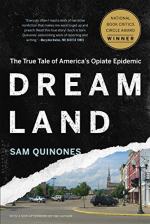|
This section contains 2,761 words (approx. 7 pages at 400 words per page) |

|
Xalisco, Nayarit, Mexico
Despite its casual introduction early in the book as "a small state on Mexico's Pacific coast called Nayarit," the small state played a massive role in the formation of the modern opiate epidemic (6). Mexico's fifth-smallest state with a population of barely one million, Nayarit is made up of ranchos, or "villages on the outskirts of civilization" (20). Ranchos were inhabited by rancheros, whom Quinones romantically claims "embodied Mexico's best pioneering impulse... They were dedicated to escaping poverty, usually by finding a way to be their own bosses" (20). Small Mexican rancho-states like Nayarit are unique in the sense that their inhabitants traditionally all participate in the same trade or industry. For example, Quinones recounts one state where almost every family opened tortilla shops. In Nayarit, able-bodied men had two choices: farming sugarcane or selling heroin. Remote villages on the outskirts of the state supplied the gooey substance...
|
This section contains 2,761 words (approx. 7 pages at 400 words per page) |

|




